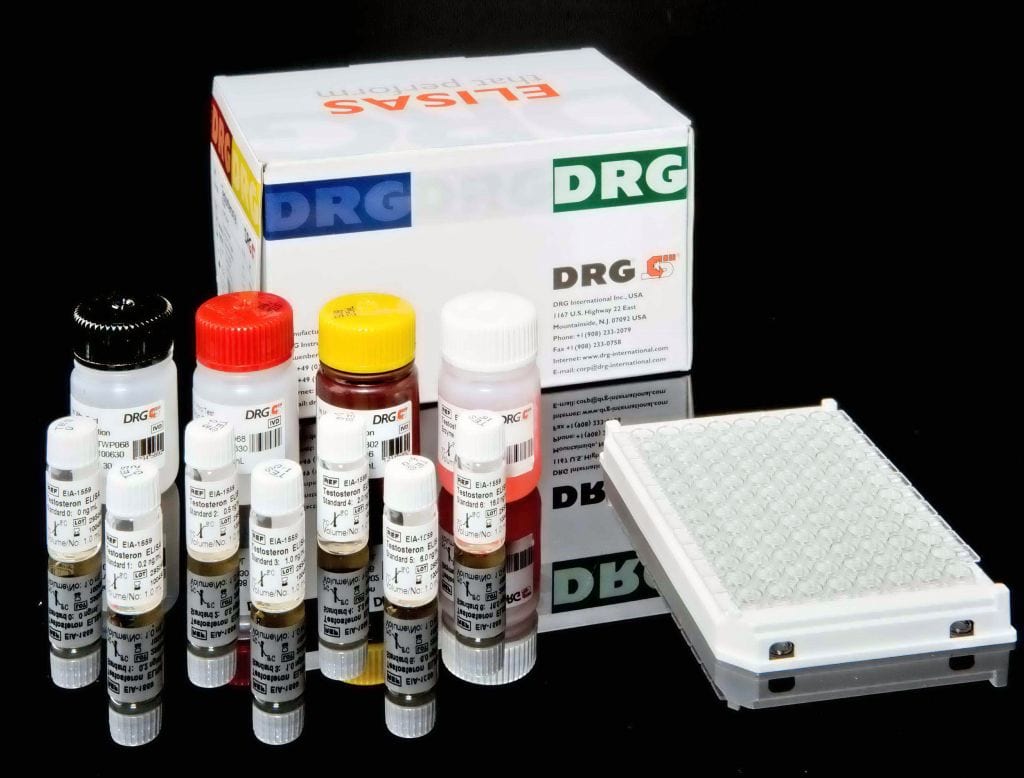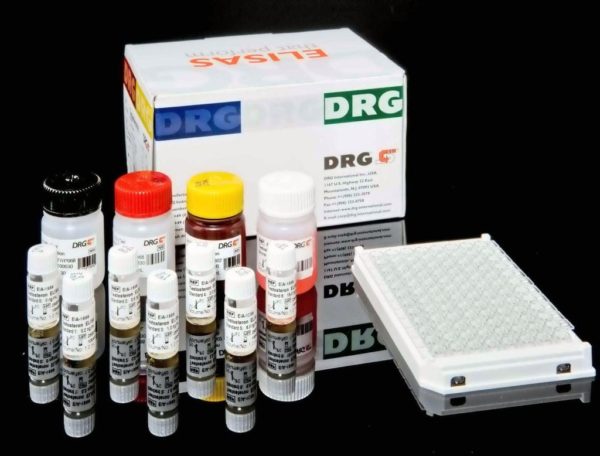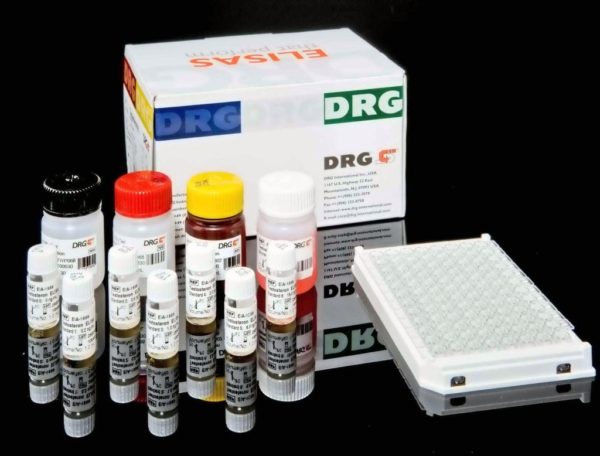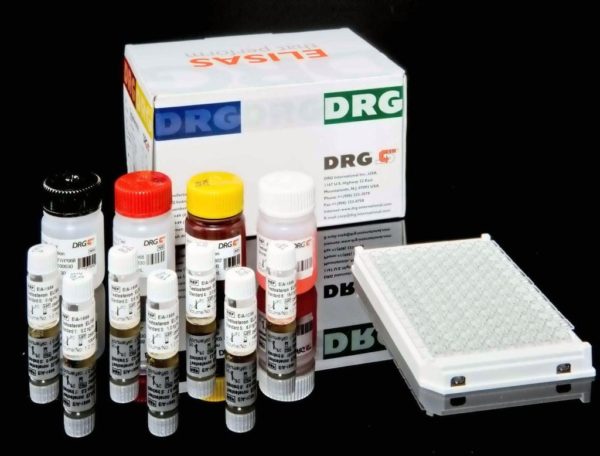Description
The DRG Estrone ELISA is an enzyme immunoassay for the quantitative in vitro diagnostic measurement of Estrone in serum and plasma
Estrone (3-hydroxy-1,3,5 (10)-estratrienÐ17-one) is beside estradiol and estriol one of the three major naturally occuring estrogens. The estrogens are involved in the development of
female sex organs and secondary sex characteristics. Bioassay data indicate that the estrogenic activity of estrone is considerably lower in comparison to estradiol (1). However, the physiological role of endogenous estrone is not well defined. Estrone is produced primarily from androstenedione. In premenopausal women, more than 50% of the estrone is
secreted by the ovary. In prepubertal children, men and postmenopausal women, the major portion of estrone is derived from peripheral tissue conversion (2). During the follicular phase of the menstrual cycle the estrone level inreases with a clear peak around day 13. The peak is of short duration and by day 16 of the cycle levels will be low again. A second peak during the luteal phase occurs around day 21 of the cycle. If fertilization does not occur production of estrone decreases again. These changes of estrone concentration are in
parallel to that of estradiol (3). Until the 4. to 6. week of pregnancy, estrone originates primarily from maternal sources such as the ovaries, adrenals, or peripheral conversion thus remaining within the normal values (4). After the 6. to 10. week of pregnancy the values increase gradually due to placental secretion of estrone. After menopause, estrone levels do not decline as dramatically as estradiol levels. In postmenopausal women estrone is the major estrogen. In males the concentration of E1 has been reported to rise up with age inversely to that of 17-OH-progesterone (5). In premenopausal women excessive estrone levels can result from the conversion of large amounts of androstenedione produced in polycystic ovary syndrom (6) and ovarian tumors.
The DRG Estrone ELISA Kit is a solid phase enzyme-linked immunosorbent assay (ELISA), based on the principle of competitive binding. The microtiter wells are coated with streptavidin and biotinylated Estrone molecules. Endogenous Estrone of a patient sample competes with this immobilized Estrone for binding sites of a HRP-conjugated sheep antibody directed towards an antigenic site of estrone. After incubation the unbound antibody conjugate is washed off. The amount of bound peroxidase conjugate is
inversely proportional to the concentration of Estrone in the sample. After addition of the substrate solution, the intensity of colour developed is inversely proportional to the concentration of Estrone in the patient sample.




